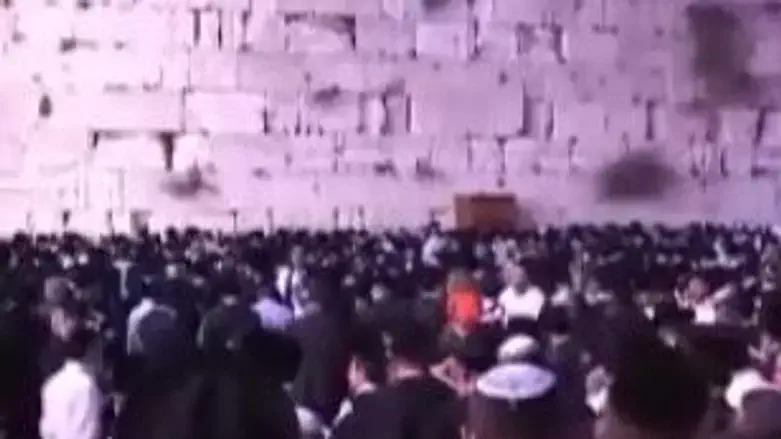
2. According to Heinrich Heine, the 19th century German poet, “Since the Exodus, freedom has always spoken with a Hebrew accent.”
3. On December 11, 1964, upon accepting the Nobel Peace Prize, Dr. Martin Luther King, Jr. said: “The Bible tells the thrilling story of how Moses stood in Pharaoh’s court centuries ago and cried, ‘Let my people go!’”
4. The USFounding Fathers were inspired by the Exodus, in particular, and the Mosaic legacy, in general, shaping the Federalist system, including the concepts of (anti-monarchy) limited government, separation of powers among three co-equal branches of government, featuring Congress, as the most powerful legislature in the world.
5. The US Founding Fathers deemed it appropriate to engrave the essence of the Biblical role model of liberty (the Passover-related Jubilee) on the Liberty Bell: “Proclaim liberty throughout all the land, unto all the inhabitants thereof (Leviticus, 25:10).” The Jubilee is commemorated every 50 years, and the Liberty Bell was installed in 1751 upon the 50th anniversary of William Penn’s Charter of Privileges.
Moreover, there are 50 States in the United States, whose Hebrew name is "The States of the Covenant" (Artzot Habreet -ארצות הברית ). Also, the Exodus is mentioned 50 times in the Five Books of Moses; Moses received (on Mount Sinai) the Torah - which includes 50 gates of wisdom - 50 days following the Exodus, as celebrated by the Shavou'ot/Pentecost Holiday, 50 days following Passover.
6. According to the late Prof. Yehudah Elitzur (Bar Ilan University), one of Israel’s pioneers of Biblical research, the Exodus took place in the second half of the 15th century BCE, during the reign of Egypt’s Amenhotep II. Accordingly, the 40-year-national coalescing of the Jewish people – while wandering in the desert - took place when Egypt was ruled by Thutmose IV. Then, Joshua conquered Canaan when Egypt was ruled by Amenhotep III and Amenhotep IV, who were preoccupied with domestic affairs to the extent that they refrained from expansionist ventures.
7. Passover highlights the unique resilience in the face of adversity, which is currently characterizing Israel. Resilience has surged the Jewish people to new heights (for the benefit of all of humanity) following a multitude of crises such as:
- the 722 BCE destruction and exile of the Kingdom of Israel by Assyria,
- the 586 BCE destruction of the First Temple by Babylon,
- the 70 AD destruction of the Second Temple by Rome,
- the 135 AD crushing of the Bar Kochba’ rebellion against Rome,
- the 484 AD, 1736 and 1865 pogroms of the Jews in Persia,
- the 627 AD massacre of the Jewish tribe of Quraysh by Muhammed,
- the 873 AD pogroms by the Byzantines,
- the 1096 First Crusade’s pogroms,
- the 1141 pogroms in Moslem-ruled Andalusia,
- the 1147 Second Crusade’s pogroms,
- the 1189 Third Crusade,
- the 1198 forced Islamization of Jews in Yemen,
- the 1248 pogroms in Baghdad,
- the 1290 expulsion of England’s Jews,
- the 1306 expulsion of France’s Jews,
- the 1492 expulsion of Spain’s Jews,
- the 1496 expulsion of Portugal’s Jews,
- the 1648 pogroms of Ukraine’s Jews,
- the 1881 pogroms of Russia’s and Ukraine’s Jews,
- the 1903 pogroms in Russia, the
- 1919 pogroms in Ukraine,
- the 1929 Arab terror in Hebron,
- the 1938 Kristallnacht pogroms in Germany and Austria,
- the January 20, 1942 Wannsee Nazi Conference which presented “the Final Solution of the Jewish Question,” etc.
8. Passover highlights the central role of women in Jewish history. For instance, Yocheved, Moses’ mother, hid Moses and then breastfed him at the palace of Pharaoh, posing as a nursemaid. Miriam, Moses’ older sister, was her brother’s keeper. Batyah, the daughter of Pharaoh, saved and adopted Moses (Numbers 2:1-10). Shifrah and Pou’ah, two Jewish midwives, risked their lives, sparing the lives of Jewish male babies, in violation of Pharaoh’s command (Numbers 1:15-19). Tziporah, a daughter of Jethro and Moses’ wife, saved the life of Moses and set him back on the Jewish course (Numbers, 4:24-27).
They followed in the footsteps of Sarah, Rebecca, Leah and Rachel, the Matriarchs (who engineered, in many respects, the roadmap of the Patriarchs), and inspired future leaders such as Deborah (the Prophetess, Judge and military commander), Hannah (Samuel's mother), Yael (who killed Sisera, the Canaanite General) and Queen Esther, the heroine of Purim and one of the seven Biblical Jewish Prophetesses (Sarah, Miriam, Deborah, Hannah, Abigail, Huldah and Esther).
9. Passover is the first of the three Jewish pilgrimages to Jerusalem, followed by Shavou’ot (Pentecost), which commemorates the receipt of the Ten Commandments, and Sukkot (Feast of Tabernacles), which was named after Sukkota - the first stop in the Exodus.
10. The annual story of Passover (Haggadah) – which underscores the Exodus, the Parting of the Sea, the Ten Commandments and the return to the Land of Israel 3,600 years ago - is concluded by the vow: "Next Year in the reconstructed Jerusalem," the exclusive and undivided capital of the Jewish people since King David established it as his capital, 3,000 years ago.
